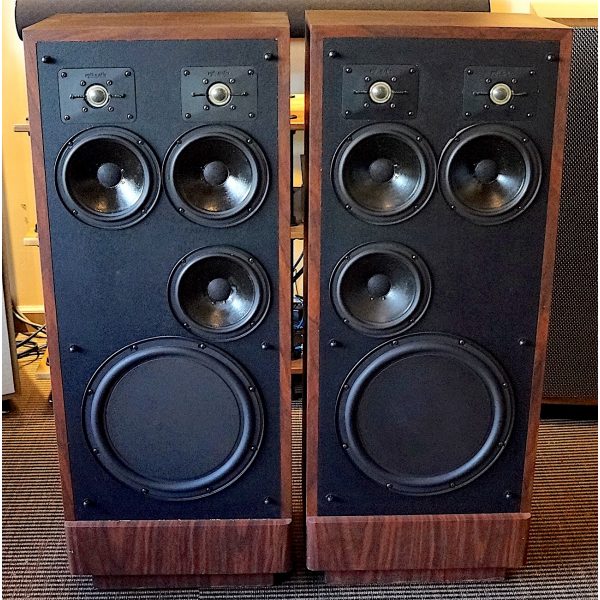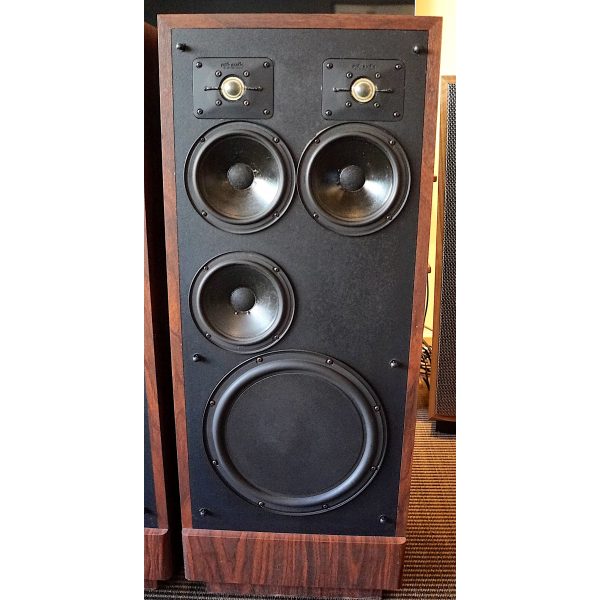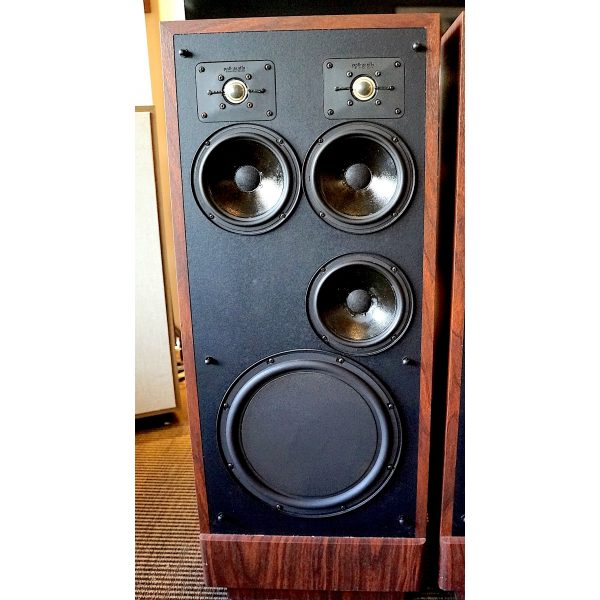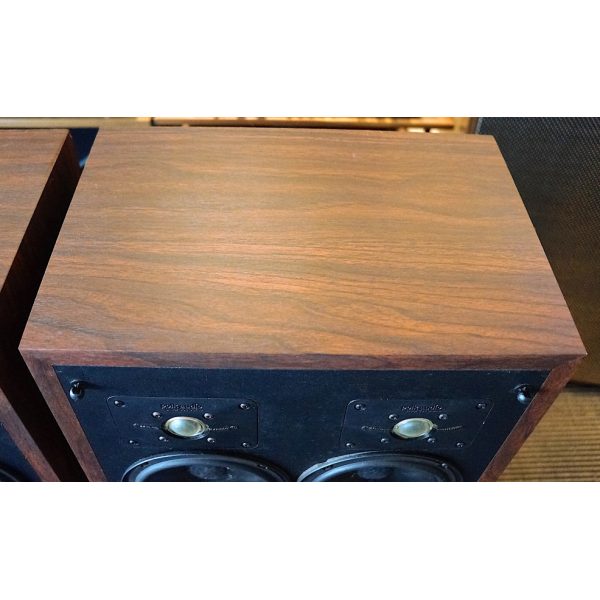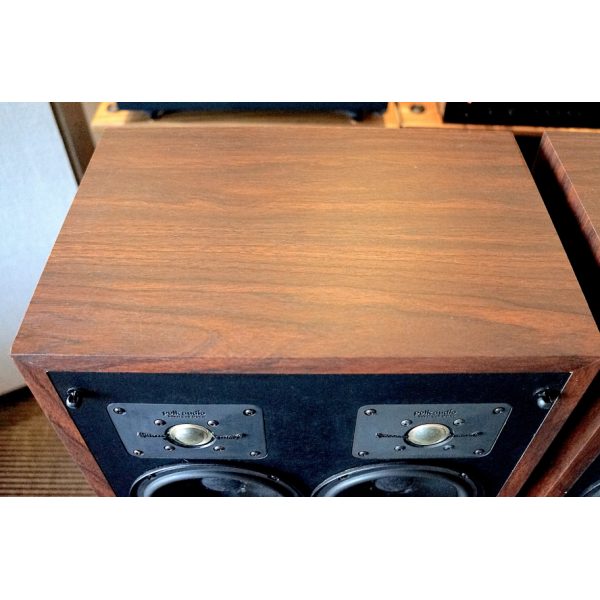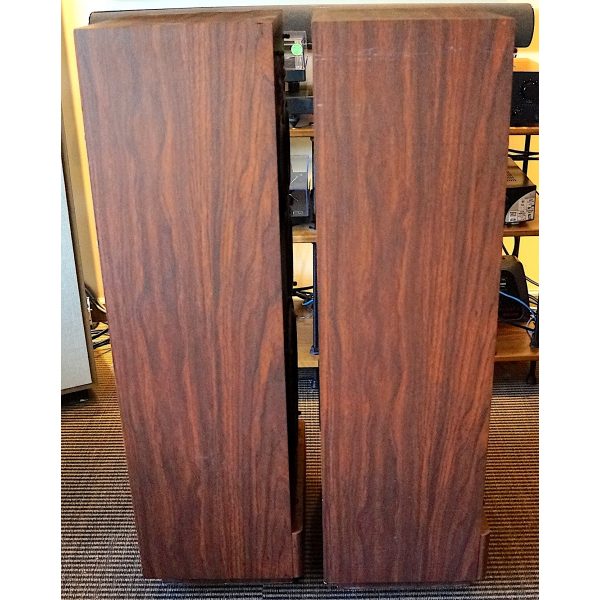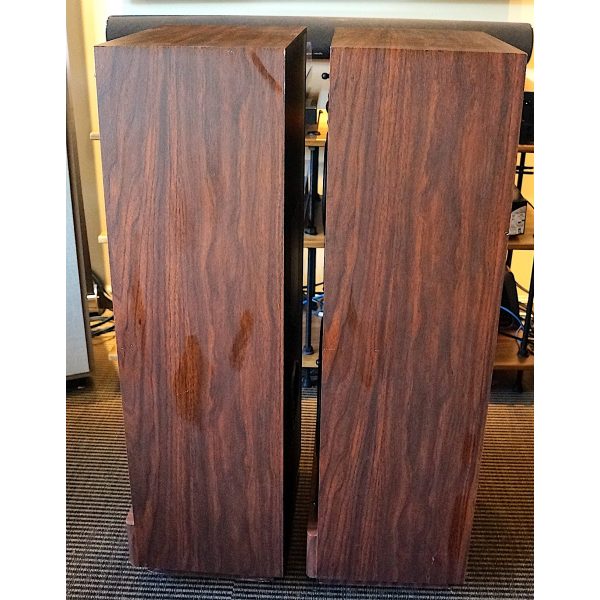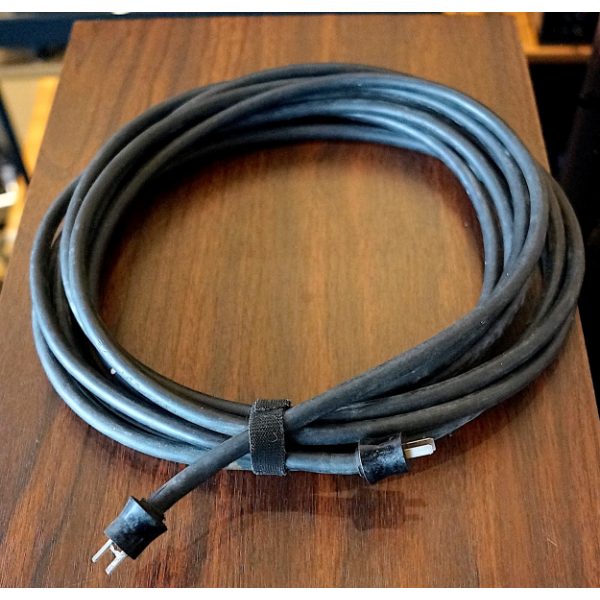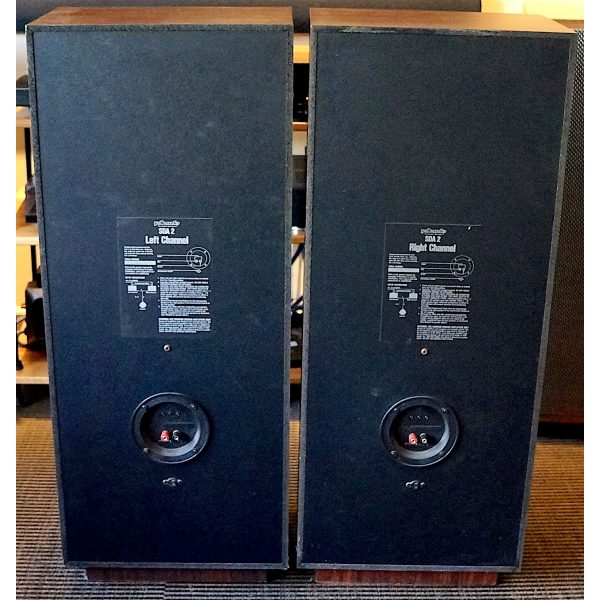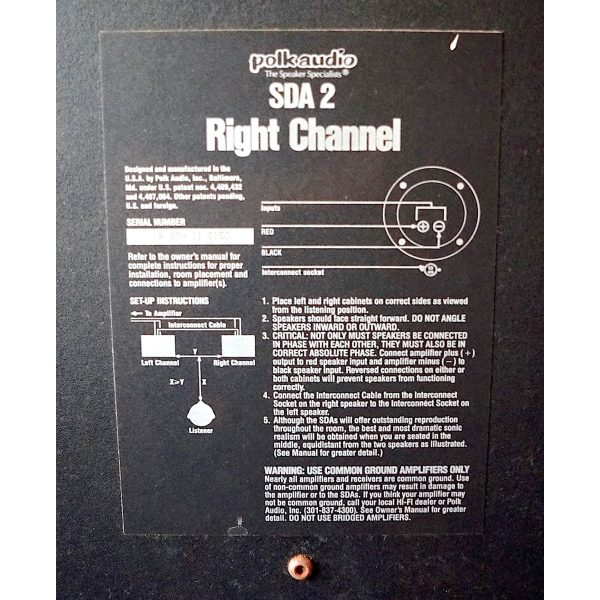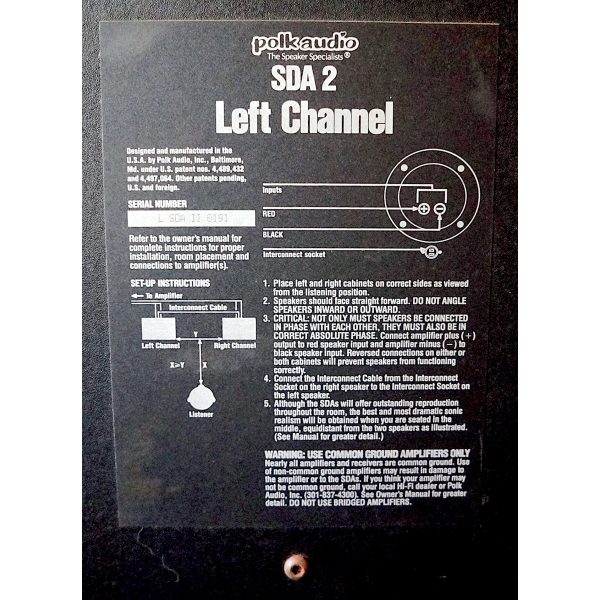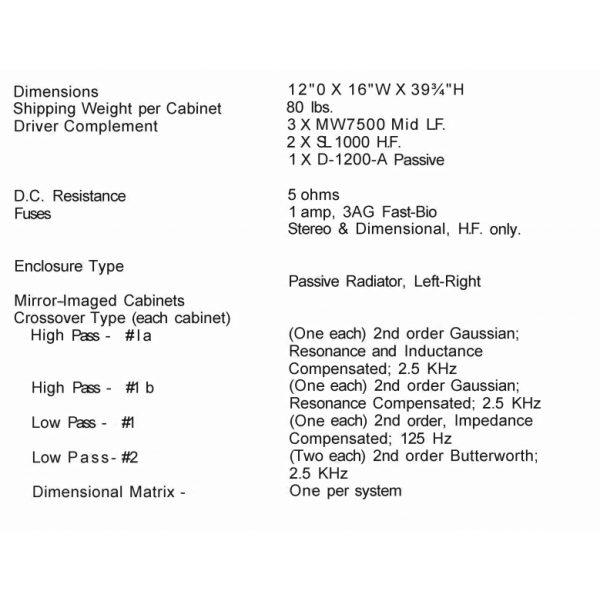Polk Audio SDA 2
Stereo/Dimensional Array 2™/ Reference Monitor System
All pre-owned product is tested in our service department and have been passed for sale... and comes with a 90 day warranty!
In good condition! Includes Interconnect Cable. Rosewood Vinyl.
Original box and packing are NOT included, so these are LOCAL SALE ONLY! Note: These are 75lbs each. Please bring an appropiate vehicle and help to load these in to car. See last image for specs.
These are an unique design - here is some background:
The principal design goals of the SDA-2 include the reproduction of a much more realistic sonic image. This is particularly important in separating one instrument from another and in recreating an accurate impression of the original hall (or studio) acoustics where the recording was made.
Traditional loudspeaker design has focused on frequency response, distortion, transient response, dynamic range, phase, impedance, etc., in an attempt to make the reproduction of music as free from colouration as possible. Various other loudspeaker designs have used combinations of reflected and omnidirectional sound to create an illusion that the sound is not coming from the speakers themselves. While paying careful attention to all of the traditional parameters for good loudspeaker design, the SDA-2 goes much further in making the reproduced sound completely free of the loudspeakers themselves.
In doing so the SDA-2 eliminates the problems of acoustic smearing and difficult room placement associated with reflecting or omni loud speakers, while offering all the musicality and detail of traditional systems. In addition it literally opens up a new dimension in the reproduction of music. The SDA-2 achieves these qualities through the application of technology based on a fundamental analysis of the recording process and the hearing mechanism. In order to create a convincing sonic illusion the loudspeakers must first be made to acoustically disappear.
The method used by the SDA-2 to accomplish this is deceptively simple and relies on the fact that a listener uses both ears to determine the direction of any sound. Specifically, a sound travelling to the listener from any direction other than straight ahead (or behind) arrives at the two ears at slightly different times.


